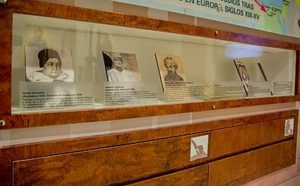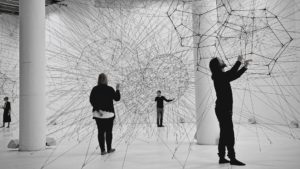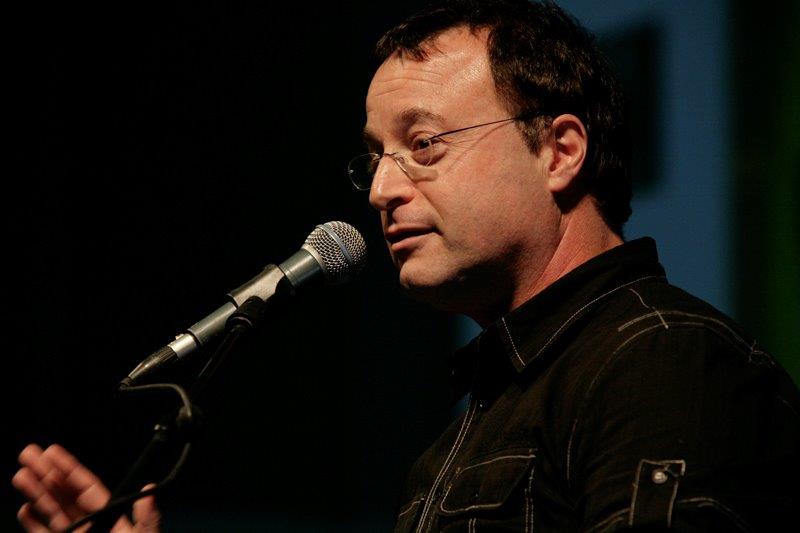Impressions from a conversation with Yaron Meiri – the owner and chief creative officer of Orpan Group
Judaica behind glass – OUT. VR and Touch Screens – IN. The information revolution, which has dramatically changed the way we consume content, is also reaching the sanctum of the cultural world: museums in general, and Jewish museums in particular. How to address issues of identity and self-determination in the world of social networks and fast pace? Orpan Group, which specializes in designing and producing Jewish museums around the world, provides a fascinating glimpse into the intricacies of the new Jewish museums
 September 2019, Kyoto, Japan – International Council of Museum Conference. In an event that was supposed to carry a restrained and tight character and a cultural atmosphere, extraordinary drama was recorded, in a response to the organization’s management proposal to redefine the concept of “museum”. The organization indicated that in light of the social changes and rapid technological developments, the demand to redefine the concept of a museum, which has not been redefined in 50 years, is quick.
September 2019, Kyoto, Japan – International Council of Museum Conference. In an event that was supposed to carry a restrained and tight character and a cultural atmosphere, extraordinary drama was recorded, in a response to the organization’s management proposal to redefine the concept of “museum”. The organization indicated that in light of the social changes and rapid technological developments, the demand to redefine the concept of a museum, which has not been redefined in 50 years, is quick.
Redefining the relationship
 In the past, the role of the museum – and, at the same time, its definition – was very clear. Museums have been used as a platform for displaying collections of artifacts and other objects. The objects displayed in the museum were separated from the visitors, either through strict observance or through physical means. Touching the exhibits was forbidden, and their role was to honor, evaluate and watch from the side.
In the past, the role of the museum – and, at the same time, its definition – was very clear. Museums have been used as a platform for displaying collections of artifacts and other objects. The objects displayed in the museum were separated from the visitors, either through strict observance or through physical means. Touching the exhibits was forbidden, and their role was to honor, evaluate and watch from the side.
But in the 21st century, museums have become democratic and pluralistic spaces, for a critical dialogue about the pasts and the futures; Places where significant questions regarding conflicts and challenges of the present arise and being dealt with; Collaborative and transparent institutions, and work in active partnership with and for diverse communities. In this sort of space, visitors are no longer viewers from the side, but become active participants, who have a substantial role in the visitor experience. They are invited to explore, experiment and interact intensively with the displays at the museum.
Not a monument of values
 The discussions around the museum’s new identity are also taking place in Jewish museums around the globe. Certain Jewish museums, and especially old-time museums, sometimes draw a picture of a forgotten Jewish world, offering a visit to one of the Jewish Diaspora’s “grave”. The findings – in the form of ancient religious objects or desolate synagogue photographs – are being served as an evidence of the “death certificate”. A visitor who is not an Orthodox Jew, may feel himself alien to this distant reality, and as a result perceive Jewish identity – and consequently the Jewish Museum – as extinct, irrelevant and detached.
The discussions around the museum’s new identity are also taking place in Jewish museums around the globe. Certain Jewish museums, and especially old-time museums, sometimes draw a picture of a forgotten Jewish world, offering a visit to one of the Jewish Diaspora’s “grave”. The findings – in the form of ancient religious objects or desolate synagogue photographs – are being served as an evidence of the “death certificate”. A visitor who is not an Orthodox Jew, may feel himself alien to this distant reality, and as a result perceive Jewish identity – and consequently the Jewish Museum – as extinct, irrelevant and detached.
How do you still maintain relevance and attractiveness, even for Instagram and Tik-Tok generation? In the 21st century, Jewish museums engage with these challenges in 2 ways: one is by changing the visit from a passive visit to an experiential visit, and the other is to convey messages in a terminology that is relevant to our time. Orpan Group’s Jewish museums implement this by translating the central Jewish values into a universal and up-to-date language, which creates an intimate and open-mindedness, inviting visitors to introspection and discussion.
Can touch this
 The rapid technological changes, borne on the wings of the Information Revolution, overwhelm us with content and information that we cannot consume. The advantage we need is to know how to filter the content and to choose the information that is most relevant to us. Under these conditions, acquiring new knowledge in the conventional way seems to the average museum’s visitor as an unnecessary burden, leading to a feeling of boredom. The visitor’s attention can only be obtained through the unique means of the 21st century, and the name of the game is an experience.
The rapid technological changes, borne on the wings of the Information Revolution, overwhelm us with content and information that we cannot consume. The advantage we need is to know how to filter the content and to choose the information that is most relevant to us. Under these conditions, acquiring new knowledge in the conventional way seems to the average museum’s visitor as an unnecessary burden, leading to a feeling of boredom. The visitor’s attention can only be obtained through the unique means of the 21st century, and the name of the game is an experience.
Game, mission, or participation in an interactive station – our main goal in museum’s design today is to make the visitor experience an active experience, where the visitor is asked to touch, take part, think, feel. Active participation contributes to the emotional engagement, internalizing the message and burning it in consciousness.
In designing new Jewish museums, we make an accurate and measured use of cutting-edge technologies, for enhancing the museum experience. At the same time, we maintain a high level of sensitivity to the content, depth and meaning. From interactive display with touch screens with information about the displayed objects, through interactive games, holograms, AR, VR and multisensory impressive displays on giant screens, which sometimes incorporate moving chairs and other stimulations – all adding to the museum’s experiential dimension, and appeal to more diverse audiences in terms of ages and interests. Examples of this can be found in the Jewish Museum and Tolerance Center in Moscow, Russia, as well as in the Jewish interactive museum of Chile planned by Orpan Group.
Between universality and authenticity
The second way to deal with the relevant question is by delivering the message in a universal and current language. This issue may be of a great concern to Jewish museum’s planners and designers, as it touches on the roots of Jewish identity. The questions “What is Judaism?” And “Who is a Jew?” are deep and complex questions, all the more so when it comes to communities of immigrants who settled in different nation states, from which they drew unique identity elements, and due to the secular processes, that the Jewish people underwent. Therefore, in designing a Jewish museum, we seek to touch the most universal and broad common denominator, to make Jewish values accessible to non-Jewish visitors as well, without compromising their authenticity and uniqueness, while adhering to historical sources, being loyal to significant events and processes and telling all the pasts.
There is no doubt that in our work on the Jewish museums in the future, we will continue to face the challenge of relevance, and we will continue to look for more and more creative ways to touch and engage with the visitor’s heart.




